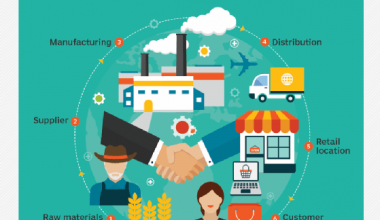Given that over 2.5 quintillion bytes of new data are produced daily, and that figure is rising daily, data is present everywhere around you. Interestingly, over 90% of this data has reportedly only been gathered in the last 5 years. Organizations can thrive in their professions through data collection, organization, analysis, and interpretation. The only way for businesses to develop their procedures and carry out their marketing strategy is if they are effective at each level. Finding data is only one page of the book you have read. Several pages are missing! The most crucial stage is to deliver the material effectively. The time you spend gathering and organizing the data will be wasted if this isn’t done correctly. But how do you successfully communicate data? Using business reporting software and tools is straightforward.
An organization relies on these technologies to meet its reporting requirements. They assist you in effectively presenting your data. Interested in finding out more about reporting tools and software? Read on…
Business Reporting Tools
Business reporting tools enable businesses to collect data from many sources, compile information, and produce insightful reports and analytics that are visualized as graphs and charts for business intelligence (BI).
By monitoring key performance indicators (KPIs), identifying trends and patterns to develop future growth strategies, and aiding in decision-making, these reports give enterprises real-time data visibility.
Different businesses employ various reporting tools, typically integrated into a centralized BI suite to combine reports to produce insightful data.
Market automation and analytics software, sales dashboards, customer relationship management (CRM), enterprise resource planning (ERP), information technology (IT) software and dashboards, financial accounting software, time tracking tools, and business intelligence (BI) software are the main categories of reporting tools you might come across.
What are the Benefits of Using Business Reporting Tools?
The following are some pros of employing business reporting tools:
- improved data monitoring and management
- centralized data for a deeper comprehension of business processes
- Access to numerous reports made easier
- Simple report customization and data sharing
- One-click reports improve forecasting and decision-making
- Save resources and time.
- Automaticity and security
Best Business Reporting Tools
#1. Izenda’s Embedded Analytics
You can integrate into an existing framework using Izenda’s Embedded Analytics.
Features
- The BI platform can be most readily integrated into online apps.
- The tool’s user-friendly set of reports, dashboards, and visualizations help you improve your application.
- The installation of a fresh or exclusive data warehouse is unnecessary for Izenda.
- Izenda creates reports instead of using its current databases.
- Its automated query-building engine aids in this process.
- Pricing: Available upon request
#2. Sap Crystal Reports
Software for business intelligence includes SAP Crystal Reports. It helps produce reports from several sources, including Microsoft Excel, Oracle, SQL Server, MySQL, and XML Data Source.
Features
- Small and medium-sized firms would benefit from it the most.
- Making lucrative business decisions is made simple with the aid of SAP.
- SAP has a wide range of functionality, including distributing PDF, spreadsheet, and HTML content.
- The platform supports multiple language reports.
- Depending on the language selection, formatting is modified. Above all, SAP ensures the security and safety of the data.
Pricing: $495 per license.
#3. Planful
Planful is a cloud-based tool developed for performance management.
Features
- It is an automated system for supporting individuals or groups with financial activities.
- Several functionalities are available with Planful.
- The workflow administration, financial reporting, and dashboards are a few.
- To create automatic reports, Planful’s Reporting Cloud is used.
- Built-in features support the kinds of reporting that demand strict adherence.
- Considers balance sheets that adhere to IFRS and US GAAP.
- The healthcare, education, advertising, and distribution sectors are just a few areas in which Planful is a suitable tool.
Pricing: Available upon request
#4. ProWorkflow
ProWorkflow is a reporting tool with a focus on project management.
Features
- It effectively meets your reporting requirements.
- You may get all the details on projects, tasks, and works, as well as financial information, time management, and workload performance, from its Standard reports.
- With the ‘Custom Reports’ option, you can create shareable reports.
- ProWorkflow offers several extra capabilities, including resource reports on employees and time, time summary reports, workload breakdown reports, individual and general project reports, and task reports.
- ProWorkflow is designed to integrate with many applications and tools, including Xero, Kash Flow, Box Storage, DropBox, Fresh Books, Google Drive, OneDrive by Microsoft, and many more.
Pricing: From $10/user per month, which includes a maximum of 10 active projects.
#5. Hive
Hive is a tool that helps with project management, task coordination, and reporting. It is not just a reporting tool.
Features
- Dashboards, a feature of Hive, offer information about the team’s efficiency. Machine learning and artificial intelligence are used to do this.
- The solution uses real-time data to enable you to manage your team through resource allocation.
- Additionally, it estimates the time needed for project planning, resource allocation, and client billing.
- The time spent on each job or project may be easily tracked with Hive’s timesheet report.
- Zapier allows connectivity with many other technologies, including Google Drive, Zoom, Salesforce, OneDrive, and many others.
Pricing: $12/user per month.
Small Business Reporting Tools
#1. Marketo Engage: Best Reporting Software for Lead Management
Pros
- By combining customer data, content, analytics, and automation with engaged marketing and sales teams under one roof, Adobe’s Marketo Engage is a cloud-based automated marketing platform that aids organizations in providing a tailored customer experience.
- The capacity of this platform to track client preferences and then display material depending on those interests is one of its most important advantages.
- This capability increases customer engagement and sales.
- Its clever cloning campaign, which can save a ton of time, is another noteworthy aspect.
Cons
- While HubSpot serves all small-to-growing businesses, Marketo Engage focuses exclusively on the high-growth sector.
- Even though it is a strong email marketing and lead management tool, it has certain drawbacks, including a difficult user interface, difficulties for novices, filtering problems, a lack of email and landing page designs, sporadic bugs, and error codes.
- Many consumers also expressed dissatisfaction with the product’s high cost for small enterprises.
Pricing:
Marketo Engage pricing, which has four levels with various capabilities and is determined by database size, is offered by the software provider.
- Choose: Up to 25 people with basic marketing automation functionality.
- First: Fully support account-based marketing strategies with AI personalization and robust analytics.
- Ultimate: The marketing automation and analytics possibilities
- Enterprise: Ideal for teams that are distributed globally
#2. QuickBooks: Best Financial Reporting Software for SMBs
Pros
- One of the best accounting programs serving the needs of freelancers and small- to medium-sized enterprises is Intuit’s QuickBooks.
- Desktop and cloud-based SaaS versions known as QuickBooks Online or QBO are also available.
- Accounts receivable and payable reports, profit and loss statements, cash-flow statements, and other graphic reports are available through QuickBooks’ integration of all financial data.
- It has an intuitive user interface and interacts quickly with other programs, such as CRM, email marketing, time-tracking software, and e-commerce and payment solutions.
Cons
- Although QuickBooks has a mobile app, several users criticized it for being laggy and having network problems while traveling.
- Others encountered problems like system crashes, restricted customization possibilities, poor inventory management, syncing issues, missed entries, transactional restrictions, and a lack of technical help.
Pricing
QuickBooks offers four pricing tiers for small, medium, and large businesses with a 50% discount for the first three months.
- For new enterprises, Simple Start is a single-user plan.
- A business plan that can support up to three users is essential.
- Additionally, a plan to expand your business to five users is available.
- Advanced: Strongest plan with numerous customization, reporting, and automation features for up to 25 users.
#3. Skype for Business Reporting Tools
The less glamorous aspect of the pricing equation might occasionally include Skype for business on-premise reports.
Reporting, however, is essential to promote accountability and track ROI advantages properly.
They offer a set of basic Skype for business reports. However, they are based on the vast amounts of data gathered and provide usage information, call diagnostics, and media quality.
They frequently don’t have a filtering option, emphasizing the need for improved Skype for business reports.
For IT to manage tasks, resources, and staff as effectively as possible, PowerSuite’s reporting solutions reveal the appropriate metrics, delivering global awareness about the environment and benchmarking within and across the business.
Skype for Business Reporting can:
- Enhance planning
- Identify issues that require improvement
- Rapid transformation
Business Intelligence Tools
Business intelligence programs, known as BI tools, gather and analyze data to produce business insights and forecast reports.
A business can use BI technologies to analyze, gather, and visualize data to be interpreted and used to inform business decisions.
Some BI systems can specialize in gathering data from outside sources, storing data, or producing reports for specific business sectors.
There are BI systems designed specifically for the optimization of finance, sales, marketing, or other business departments using a company’s historical and present data to expect areas for improvement.
Several business intelligence tools that can help you maximize your productivity and raise your business’s performance are listed below:
#1. Alteryx
A desktop application called Alteryx provides an adjustable dashboard and automated consumer analytics reporting.
Through Alteryx Connect, Alteryx offers social capabilities that let you communicate with other professionals.
You can consult with experts in business intelligence via Alteryx Connect to uncover fresh approaches for your company.
#2. BiG EVAL
The quality control facets of data analytics are the focus of BiG EVAL.
It can be integrated into delivery, continuous integration, and ticketing systems.
You can get high-quality metrics and automated testing for analytical data models from BiG EVAL.
#3. Birst
Birst is a web-based application that gathers information from several teams and produces reports for the entire company.
This program can offer suggestions for how the entire business can operate better.
You can integrate Birst with other corporate information technologies to automate straightforward reporting chores.
#4. Birt
Birt offers simple-to-use visual reporting that can swiftly examine huge amounts of data. You may access all of your data with Birt.
The open-source tool Birt is straightforward and doesn’t require programmers to use it.
#5. BOARD
BOARD is centered on management and analytics of financial data.
It’s available in English, Chinese, French, German, Italian, and Spanish.
For consolidation, cross-selling, retention management, supplier management, and up-selling analysis, BOARD includes specialized reporting.
What are Business intelligence and reporting tools?
BI reporting tools access and read your company’s data sources on-site and in the cloud.
The reporting tool can create analyses using dimensions like date, purchase order, customer information, and metrics like sales, revenue, inventory counts, etc.
What is Excel Reporting Tools?
The sophisticated spreadsheet programs known as Excel reporting tools make it simple to prepare reports. Excel-like user interface.
Therefore, the methods for naming cells, setting cell characteristics, and editing cells are identical to those in Excel.
Conclusion
For your business to run smoothly, producing quality reports is crucial.
If you don’t succeed, your choices or activities will likewise be unsuccessful.
Therefore, you must always ensure that your company produces thorough reports that give you correct information.
- BUSINESS INTELLIGENCE TOOLS: Meaning, Best Tools, And Guide
- EXPENSE MANAGEMENT TOOLS: Step-by-Step Guide and Best Tools to Use
- SMALL BUSINESS MARKETING TOOLS: Meaning and Best Marketing Management Tools
- SOFTWARE ASSET MANAGEMENT TOOLS: Top and Best Software Asset Management Tools
- WEALTH MANAGEMENT TOOLS: Definition and Best Wealth Management Tools






